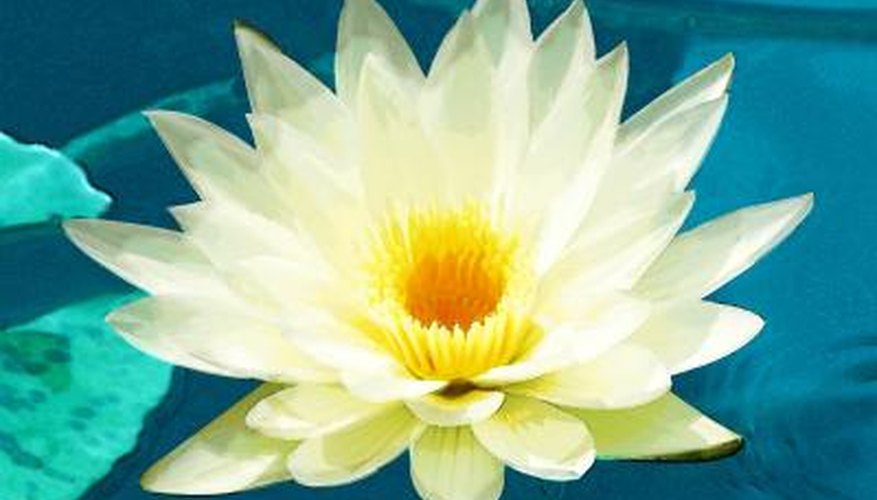The lotus is a water plant. It grows in the mud of lagoons, ponds, marshes and waterlogged fields. There are two different species of lotus. Nelumbo nucifera is native to the Philippines, Egypt, north Australia, the Volga River delta at the Caspian Sea and the Orient. Nelumbo lutea is native to North America. The lotus is adapted to a water-rich environment with a lot of sun, according to the website Exotic Waterscapes.
Leaves
Lotus leaves are wide and disc-shaped, which allows them to float on water. Their generous surface area allows them to absorb a large amount of sunlight. The leaves can reach up to 36 inches in diameter, according to the website Plant Cultures.
Properties
Lotus leaf and stem surfaces are coated in a wax that is super-hydrophobic, meaning it repels water and is very difficult to wet. This hydrophobic adaptation is referred to as the “lotus effect” and has inspired many products that emulate its properties, such as paints, fabrics and roof tiles, according to Science Ray.
Flowers
Lotus flowers bloom white, pink and yellow and are held above the water by a stem that is 2 to 4 feet tall. Many bird and insect species feed on lotus pollen. These animals distribute pollen to fertilise neighbouring plants and scatter seeds. The adaptation of a brilliant colour for the flowers attracts feeders, according to Science Ray.
- Lotus flowers bloom white, pink and yellow and are held above the water by a stem that is 2 to 4 feet tall.
- These animals distribute pollen to fertilise neighbouring plants and scatter seeds.
Microclimate
The lotus flower, stems, leaves and roots produce heat that helps to regulate the temperature of the surrounding water to form a lotus-friendly microclimate. This phenomenon is called thermoregulating. In addition to fostering its own growth, the heat the lotus plant produces attracts pollinating insects, according to the National Botanical Research Institute (NBRI).
Theories/Speculation
Lotus plants absorb large amounts of heavy metals and have been used to clean industrial pollutants. Additionally, lotus flowers have antibacterial properties, an adaptation that protects them from microorganisms and makes them a valuable medicinal plant, according to NBRI.
